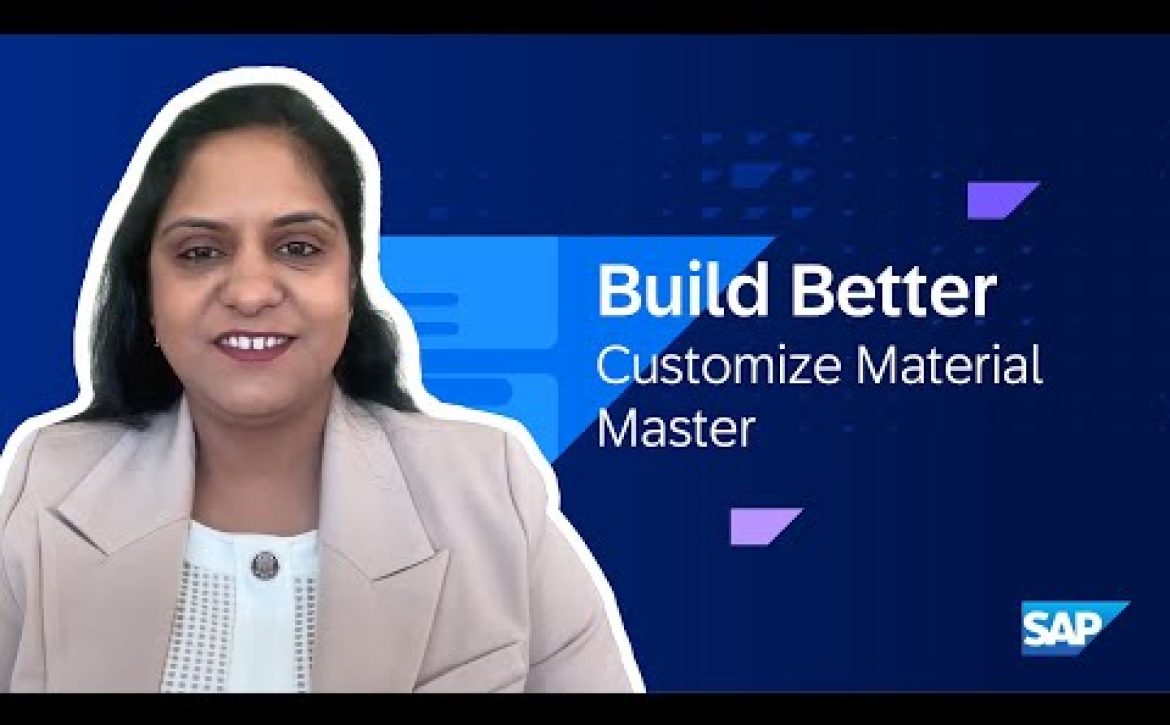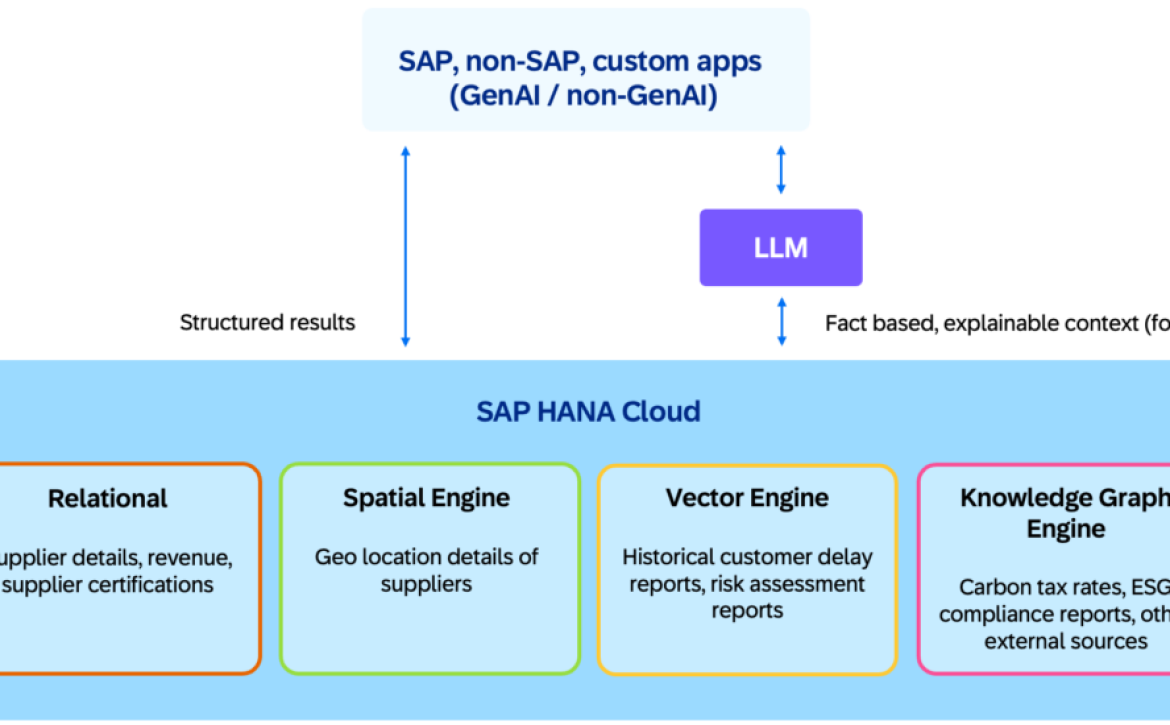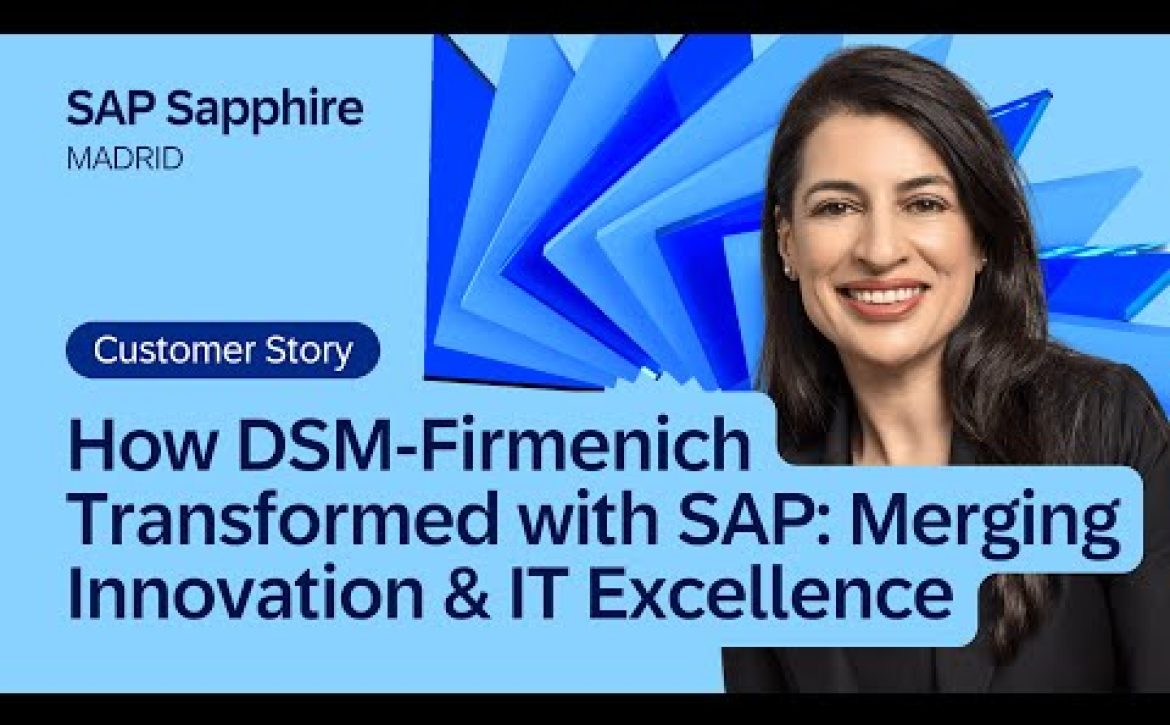Customize Material Master in SAP Build | Build Better
Standard SAP fields often fail to capture the unique details your business requires. With SAP Build, you can personalize the Material Master in SAP S/4HANA Cloud by adding attributes, approvals, and even mobile extensions—without heavy coding.
In this example, SAP Build extends the product table with new fields, links them via CDS views and OData services, and routes requests through guided approvals. Managers can even enrich data with images using a mobile app built in minutes. It’s a simple, secure way to make SAP S/4HANA fit your processes.
Start your free 30-day trial today: https://sap.to/6054AbWPs?
Empowering Partners with Free SAP Build Licenses for Test, Demo, and Development to Create AI-Powered and Intelligent Applications
SAP partners enrich our industry-leading portfolio with unique IP built on SAP Business Technology Platform (SAP BTP), the platform that unlocks partners’ ability to innovate, extend, and integrate business applications at scale.
To further empower partners to build AI-driven innovations and unlock new possibilities for customers, we are pleased to announce free access to SAP Build test, demo, and development (TDD) licenses for all SAP partners.
SAP Build offers partners a comprehensive suite of low-code, code-first, and generative AI tools to create custom Joule skills and agents, applications, automations, and digital workspaces. This new offering gives partners access to SAP Build with included entitlements up to fair use limits, allowing ISVs to innovate at a low initial cost.
Partners can use SAP Build to develop, test, and deploy applications and proofs of concept, making it easier to bring new solutions to market. These solutions can be sold on SAP Store, expanding the reach to SAP’s global customer base.
Free TDD licenses for SAP partners: what’s included
Here is what’s included — all available as of today:
- All SAP Build capabilities (developer, base and premium user, runtime, including Joule Studio and ABAP Cloud)
- SAP HANA Cloud, our multi-model database, which serves, among other capabilities, as an enabler for RAG applications and powerful persistency layer for SAP Build projects
- Additional SAP BTP services such as generative AI hub, logging services, cloud identity, and others
Furthermore, the SAP Joule for Developers add-on continues to be free for customers and partners until further notice as part of a promotion.
Accelerating transformative AI innovation on SAP Build
SAP Build makes it easier than ever for partners to develop and integrate AI into their applications. With a SAP Build developer license, you can use Joule Studio to create and enhance Joule skills — all with intuitive drag-and-drop tools.
And, coming soon, agent builder in Joule Studio will let you design, build, and deploy your own custom AI agents. These agents will tap into the SAP Knowledge Graph for rich business insights and the SAP Business Data Cloud (SAP BDC) for seamless access to data across SAP and non-SAP systems.
At the heart of it all is AI Foundation, your one-stop shop for AI. The powerful, easy-to-use platform brings together everything you need to build, extend, and scale AI solutions. With tools like generative AI Hub, partners have secure access to frontier large language models (LLMs), prompt management, and tools, such as data masking and more, that provide them with everything they need to innovate with confidence.
SAP Build: making it easier for partners to create intelligent applications
There is even more to look forward to as we continue to invest in new SAP Build capabilities to help partners innovate and grow their market share.
In the second half of 2025, SAP Build will integrate with SAP BDC, enabling developers to connect with SAP BDC data products. Coming in early 2026, partners will be able to use SAP Build to create intelligent applications and data products that can be used with SAP Business Data Cloud.
Unlock the full potential of SAP Build: exclusive webinar and partner resources
To learn more, partners can register for our SAP Build free TDD enablement webinar on August 13, 2025. Partners can visit the SAP Partner Portal for more information about SAP Build capabilities and TDD license fair use limits.
Michael Ameling is president of SAP Business Technology Platform and a member of the Extended Board of SAP SE.
Karl Fahrbach is chief partner officer of SAP.
Unifying AI Workloads with SAP HANA Cloud: One Database for All Your Data Models
Artificial intelligence is a transformative force across industries, but many enterprise architectures remain stuck in silos. Vector search lives in one service, relational databases in another, and knowledge graphs in yet another. Every layer adds more complexity, latency, and cost.
It’s time to rethink what a modern AI-ready database should look like.
SAP HANA Cloud solves this exact challenge with its single, multi-model platform that brings together vector, graph, text, spatial, and relational data natively. It enables developers and data teams to build smarter, more context-aware AI solutions — directly on operational data.
One database, every model: native support for complex AI workloads
SAP HANA Cloud uniquely supports:
- Vector data for semantic and similarity search
- Graph data for explicit relationship modeling and knowledge graphs
- Text and spatial data for real-world context
- Relational data for structured operations and analytics
Rather than sending data across disparate services, you can store and process all of it in one place, accelerating time-to-value while reducing the risk of misalignment.
This is multi-model done right, and it is the foundation for powerful AI workloads that scale.
Semantics + similarity: combining vector search with knowledge graphs
Traditional semantic search engines can tell you what documents are similar, but they cannot tell you why. On the other hand, knowledge graphs can express rich, explicit relationships, but often lack the ease of retrieval.
With SAP HANA Cloud, you don’t have to choose; you get both. Bringing together SAP HANA Cloud vector engine and SAP HANA Cloud knowledge graph engine empowers developers to build context-aware, intelligent queries that go far beyond keyword matching.
Imagine asking: “Find the nearest warehouse in Germany (~ 50 km radius of Frankfurt) for suppliers that are ISO 9001 certified, have low carbon tax rates, and are not flagged for customs delays.”

We can conduct a multi-model query to find the warehouses that fit the above criteria.
Here, we are using a SPARQL table within SAP HANA knowledge graph engine to filter the suppliers that comply to the following conditions: ISO 9001 certified, low carbon tax rates, not flagged for customs delays.


We can further combine the SPARQL_EXECUTE function in SAP HANA knowledge graph engine with vector-based semantic filtering and spatial constraints to identify suppliers that are located within “~ 50 km of Frankfurt” and whose past custom report narratives align with “no custom delays.” This hybrid query leverages SAP HANA Cloud vector engine, SAP HANA Cloud knowledge graph engine, and spatial engine to rank nearby suppliers not only by distance, but also by their trustworthiness and performance signals.

After running these queries, we have the following supplier warehouses as our best match:

This is the power of semantics plus structure, and it is built into the core of SAP HANA Cloud.
Unified queries: SQL, SPARQL, and vector search side by side
Developers must often stitch together multiple tools and languages: SQL for relational data, SPARQL for RDF, and separate APIs for vector stores.
SAP HANA Cloud removes that complexity. You can write a single SQL query that brings together relational data, semantic reasoning via SPARQL (embedded in SQL), and vector similarity search, using native SQL functions — all in one go: no ETL, no separate infrastructure, just one unified, in-memory engine.

This approach not only speeds up development, but enables new types of AI applications that were not previously practical in siloed environments.
Built for generative AI and RAG: GraphRAG, VectorRAG, HybridRAG
Large language models (LLMs) are only as good as the data they can reason over. That is why retrieval-augmented generation (RAG) has emerged as a critical pattern for enterprise generative AI.
We have brought in new capabilities into SAP HANA Cloud, whether you are grounding an LLM in unstructured text (VectorRAG), structured knowledge graphs (GraphRAG), or both simultaneously (combination of VectorRAG and GraphRAG).

SAP HANA Cloud ensures transparency, traceability, and performance throughout the generative AI pipeline with all the database management qualities. You get explainable answers and full control over how you retrieve, rank, and assemble information, which is vital for regulated industries.
Real-world impact across industries
Enterprises across industries are already leveraging the multi-model capabilities of SAP HANA Cloud for transformative outcomes:
- Supplier matching and environmental, social, and governance (ESG) scoring: Blend structured supplier data with document similarity and relationship insights to identify ideal partners
- Compliance monitoring: Connect and query policies, regulations, and audit trails with natural, semantic inputs
- Fraud detection: Analyze transactional data, behavioral signals, and known fraud patterns — all in real time
- Life sciences research: Integrate clinical trials, publications, and patient outcomes using hybrid semantic and structured queries
These are use cases where meaning is distributed across formats, systems, and relationships.
Developer experience: simplicity without compromise
SAP HANA Cloud offers developers:
- One platform for all data models: Combined structured, unstructured, and semantic data without stitching together multiple systems
- Built-in support for modern AI workloads: Enable use cases like RAG without external vector stores or pipelines
- Tight integration with SAP and open ecosystems: Leverage SAP Business Technology Platform and popular open-source tools with minimal setup
- Focus on innovation, not infrastructure: Eliminate the need to manage and maintain separate triplestores, search engines, or vector databases
The result is faster prototyping, cleaner architecture, and lower operational complexity.
Conclusion: It’s time to rethink your database
In the AI-first enterprise, data is not just a backend concern; it’s the front line of innovation. And innovation requires infrastructure that is flexible, intelligent, and unified.
SAP HANA Cloud provides building blocks to create the infrastructure for AI apps in a way that is easy to consume. It doesn’t just support AI workloads; it accelerates them, with a single platform that brings together semantics, similarity, and structure in real time.
AI needs more than just access to data and SAP HANA Cloud delivers that, natively.
Key takeaways
- Unified multi-model: Vector, graph, spatial, text, and relational data all in one platform
- Smart queries: Compose intelligent queries using SQL, SPARQL, and vector search — side by side
- Generative AI-ready: Built for GraphRAG, VectorRAG, and HybridRAG with full explainability
- Reduced complexity: No need for separate vector stores or knowledge graph engines
More information
- Ready to see it in action? Explore how SAP HANA Cloud can unify and elevate your AI architecture in SAP Discovery Center:
- Listen to the podcast: The Future of Enterprise AI starts with Knowledge Graphs
- Read more about SAP HANA knowledge graph engine here and the difference between knowledge graphs and property graphs here
- Learn more about SAP HANA Cloud
- See what else is new with SAP HANA Cloud
Philipp Herzig is CTO, chief AI officer, and a member of the Extended Board of SAP SE.
Stefan Baeuerle is senior vice president and head of SAP BTP/SAP HANA & Persistency at SAP.
How DSM-Firmenich Transformed with SAP: Merging Innovation & IT Excellence | SAP Sapphire 2025
Discover how DSM-Firmenich, a global leader in nutrition, health, and beauty, successfully merged two historic companies and transformed its IT landscape with SAP. Join Chief Digital & Information Officer Ipek Ozsuer as she shares the inside story of integrating diverse cultures, streamlining complex systems, and driving innovation with SAP Business Suite, GROW with SAP, and RISE with SAP.
Learn how DSM-Firmenich achieved business agility, won innovation awards, and set a new standard for digital transformation in the consumer industry. If you’re navigating a merger, leading digital change, or curious about SAP solutions in action, this interview is packed with actionable insights and proven strategies.
0:00 – Introduction & Company Background
0:28 – The Merger Story
1:19 – Products in Everyday Life
1:52 – IT Architecture Challenges
2:58 – SAP Solutions in Action
4:14 – Measurable Impact & Awards
5:27 – Lessons Learned for Leaders
Watch the full Customer Keynote: https://youtu.be/nF35qFUxuzs
Watch all SAP Sapphire replays on demand: https://sap.to/6054NNx1m
#SAPSapphire #CustomerSuccess @dsm-firmenich
Equipping Students with In-Demand Skills Through Business Builders
As the global workforce undergoes rapid transformation driven by technological advancements, the demand for new skill sets is intensifying. A recent McKinsey report highlights that surveyed executives express a pressing need not only for advanced IT and data analytics but also for critical thinking and creativity—skills currently in short supply.
Academic institutions are at the forefront of addressing this challenge, tasked with equipping students with the competencies required in a digital-first economy. Recognizing this imperative, SAP University Alliances and HEC Montréal have collaborated to develop Business Builders, an innovative, gamified learning platform designed to help enhance students’ analytical and decision-making skills using SAP Analytics Cloud.
Introducing Business Builders: A gamified approach to make students future-ready
Business Builders is designed to help students develop these high-demand skills in a practical and engaging way. Through real-life business challenges powered by SAP Analytics Cloud, students can learn how to visualize data, draw actionable insights, and make evidence-based decisions in real time.
Used by educators in over 70 countries, Business Builders is free for educators and students. It is designed to be accessible to any classroom—whether in business, STEM, or interdisciplinary courses.
By blending gameplay with professional tools, Business Builders helps address several key pain points in education:
- It can make data and analytics more tangible and relevant.
- It helps foster analytical thinking, data storytelling, and digital literacy.
- It can align directly with the needs of the future workforce.
Whether students aspire to careers in consulting, supply chain, product management, marketing, sustainability, or HR, Business Builders can provide an environment to explore these topics while gaining in-demand skills.
Two new scenarios for a broader audience
Building on the success of three existing scenarios, SAP and HEC Montréal are now launching two brand-new games designed to support even earlier-stage learners: The Agent and The Maple Heir. These scenarios help make Business Builders more inclusive, scalable, and suitable for students age 15 and older and first-year university students. Importantly, no prior experience with SAP tools is required, making it easy for educators and students to get started.
The Agent is an easy-to-use sports management scenario that can empower students to become decision-makers as they take on the role of a sports agent. Through real-world sports challenges, students can develop basic analytical skills using intuitive dashboards in SAP Analytics Cloud. They answer questions like: Which player is the most improved? How can a team optimize its performance? Which sport averages the highest number of followers on social media? What is the value? It’s a fun, relevant, and accessible way to introduce analytics in the classroom—no SAP experience needed.
The Maple Heir, on the other hand, is a scenario that introduces students to the fundamentals of running a business through the engaging story of inheriting a maple syrup company in Quebec, Canada. Students step into the role of a new stakeholder eager to understand and optimize the company’s operations, financial health, and growth potential. From analyzing income statements and profitability metrics to exploring production processes and workforce management, students can gain hands-on experience in making strategic business decisions. The scenario also addresses real-world challenges like seasonal demand fluctuations and business expansion opportunities. By visualizing data and presenting actionable insights with SAP Analytics Cloud, students can learn essential concepts in entrepreneurship, finance, and operations in a gamified, accessible way.
Both scenarios are built with educators in mind: they’re easy to integrate into existing curricula and supported by ready-made teaching materials. Whether in economics, business, IT, or interdisciplinary courses, they can offer an engaging way to make learning stick.
Empowering educators to build the future
The launch of these two new scenarios reaffirms SAP’s commitment to empowering the academic community to build the future workforce—one student at a time. By helping students master analytics tools, hone critical thinking, and gain early exposure to business systems, Business Builders helps ensure they’re better prepared for internships, first jobs, and long-term careers.
In a world increasingly shaped by AI and data, it’s not just about knowing how to code or use a tool—it’s about thinking critically, communicating clearly, and making sense of complex information. With Business Builders, educators can give students a head start in all of these areas.
If you’re an educator looking to enhance your curriculum with innovative, practical learning tools, explore Business Builders today or join one of our virtual road shows to experience it in action and hear firsthand from those already using it.
Thorsten Haas is part of SAP University Alliances.






